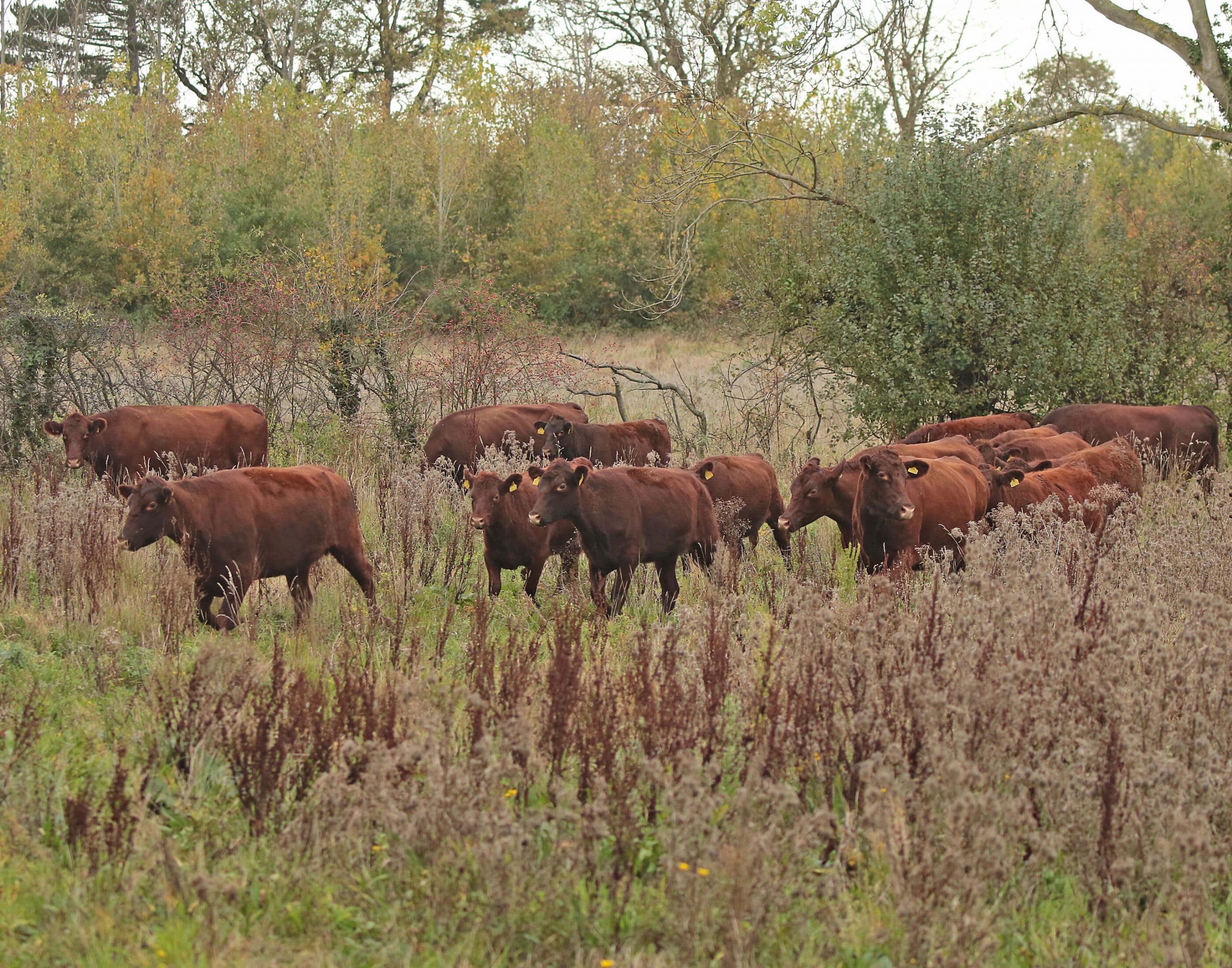


Over the past month, we’ve had the exhilarating experience of releasing grazing animals, not once, but three times; Red Poll cattle, Exmoor ponies, and Tamworth pigs have all joined us on site.
We described previously how we had carefully selected breeds that were docile and would remain calm and friendly around people, as well as bringing important positive ecological benefits.
First to arrive were the Tamworth pigs: Ruby and Rose. These two lovely ladies came from Wiltshire. They came to us in excellent condition, perhaps even a little overweight – watching them tentatively inch down the steel ramp out of the trailer was rather amusing.
Instantly Ruby and Rose got to work . They have predominantly spent their time in the woodland, wandering up and down the rides, rootling for acorns and chestnuts along and occasionally diving into specific woodland compartments or out into the open.
Rootling is important because it creates bare ground – an important habitat – and disturbs the soil, which encourages the regeneration of vegetation. This way, the Tamworths play an important role in rewilding the site.
The Red Poll cattle were next to join us, coming up from Essex. As soon as the doors of the haulage vehicle opened, the ~30 head of Red Poll or so were delighted to reach their new home, and quickly trotted off into the coarse vegetation.
They’ve settled in extremely well finding plenty to eat, mostly across the formerly-arable fields that have undergone ~18 months of rewilding. The Red Poll have also been extremely docile as expected; the team have frequently found themselves walking among the cattle, often with dogs, and the cattle have been very well behaved.
The Exmoors were the last and perhaps most-anticipated addition. After a very long journey from Brendon in Devon, the Exmoors were released into two separate areas in the late afternoon.
The first group of around 12 were released into the rewilding area. They immediately found the remnant heathland in the centre of the area, which suits them very well with many similarities to Exmoor itself. Although the Exmoors were quick to explore most of the rewilding area, cantering around, they have always come back to the heathland to overnight.
We think the natural processes carried out by the Exmoors – grazing, browsing, taking dust baths – will help improve and spread the heathland, as well as the neighbouring woodland pasture, another rare and valuable habitat.
A second, smaller group of Exmoors were introduced to the freshwater marshes. This is a different habitat where we have a much more specific, outcome-focused set of objectives; want to graze the grass down, to create a tight sward that provides excellent breeding habitat for wading birds like the lapwing.
Together, we call them the Red Poll, Exmoors, and Tamworths “new site managers” because of the way they will manage and improve habitats across Wild Ken Hill. It’s incredibly exciting to have them here, and we are extremely glad to see on social media the number of people that have seen the animals at work whilst using the public and permissive footpaths at Wild Ken Hill. We hope you can join us on the journey – more frequent updates, we are on Instagram, Twitter, and Facebook!